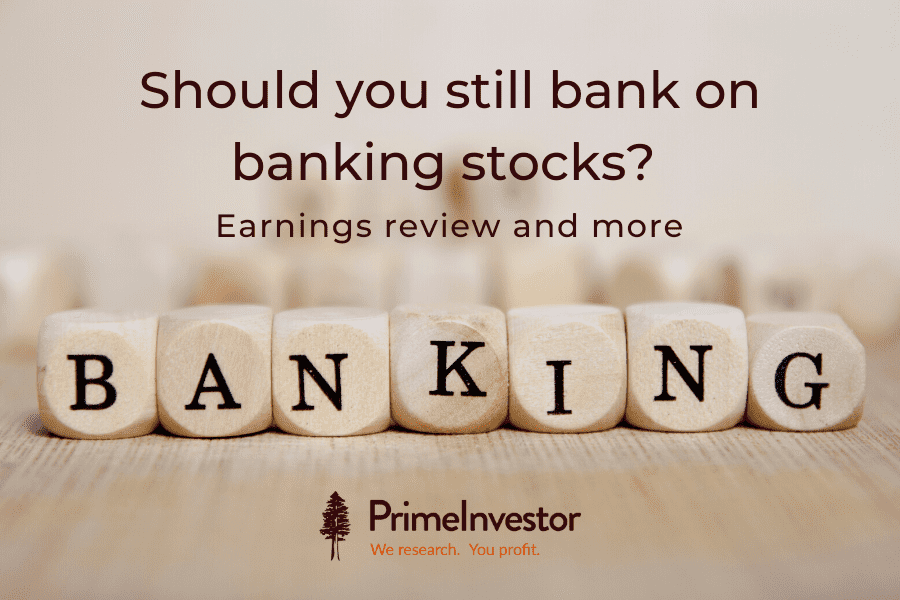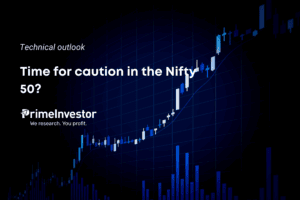This earnings season, the standout performers come from the banking sector. While private banks led the revival in earlier quarters, this time around, performance is visible all round – across leading private banks to old private banks and PSU banks. Regional banks like Karur Vysya Bank have staged a strong comeback with > 4% net interest margin (NIM) and 1.2% return on assets (RoA).
Below is a snapshot of the profitability numbers of a representative sample of banks taken across market cap and advance size for Q2FY23.
The data tells you that even after a robust recovery in FY22, the earnings momentum remained strong in the first half of FY23 as well. If we analyse the numbers in detail, the strong growth has come on the back of best-in-class Net Interest Margin (NIM), continuously improving asset quality (NPA) and improving Return on Assets (RoA). Coinciding with this performance, the bank stocks had a stellar rally between June and September 2022. In fact, the Bank Nifty rallied from its 52-week low to 52 weeks high in a span of 3 months with absolute gains of 27%.
Let us look into the key metrics in detail to gauge the earnings performance.

NIMs top
Last few years of low interest rates and robust deposit growth helped banks garner significant low-cost deposits even while the new system of external benchmark based lending rates allowed banks to pass on the interest rate hike by RBI to borrowers quickly. As a result, NIMs of banks expanded and is among the best now (Q2 of FY23) compared with earlier periods as seen in the graph below.
ICICI bank reported its highest NIM in a decade while PSU bank like Canara bank and old private sector bank like Karur Vysya were able to restore the NIMs that they used to enjoy in their best years.
Asset quality (NPA) back to normal
The next important factor aiding profitability was the continuous fall in NPAs which peaked out during FY17 -FY18 for most of the banks.
As we can see from the graph, banks across the board reported their highest NPAs during the FY17-FY18 period and declined since (barring IndusInd Bank, which landed into crisis in FY19 post IL&FS crisis). They have now reached NPA levels that are normal for the business of banking. Even PSU banks like Canara Bank managed to significantly bring down its NPA while regional banks like Karur Vysya Bank also staged a strong comeback.
How banks landed in an NPA mess – the previous cycle
The previous credit cycle coincided with the economic boom of 2003-08 that ended with the global financial crisis (GFC) of 2008. During this period, India was seeing an investment boom led by creation of infrastructure assets including roads, power, ports, etc. Banks, especially PSU banks, turned out to be the major source of funding for them even though few like HDFC Bank still focused on retail loans. Banks in India were surprisingly unscathed by the global financial crisis and had a stellar stock price rally during 2009 and 2010 to vindicate this. To put this in perspective, Canara Bank had an average RoE of 25% between FY09 – FY11 while its Net NPA was at 1%.
But this changed as interest rates start to rise fast post November 2010, while other events such as collapse of commodity cycle, break-out of scams, excessive debt and poor infrastructure execution resulted in piling up of NPAs.
All these troubles started coming out in public post 2015 when RBI initiated asset quality review (AQR) of banks. The same Canara Bank ended up with Net NPA of 7.5% in 2018 while plunging into huge losses. Meanwhile private banks like ICICI Bank and Axis Bank too landed in trouble for their infrastructure exposure while managing to come out of it post resolutions through NCLT.
On the PSU banks, Govt pushed for consolidation with almost 10 PSU banks becoming 4, effective 1st April 2020. The sector went through a classic cycle where the inefficient ones moved into oblivion while the survivors emerged stronger in a new lending cycle.
Superior Return on Assets (RoA)
As NIM expanded and asset quality normalised, profitability shot up leading to significant improvement in RoA. While top banks like ICICI Bank and Axis Bank have already reached high RoA levels, there may be a bit of room for the likes of Indusind Bank as well as PSU and old private sector banks to catch-up. Superior RoA will eventually lead to superior RoE.
A 3.5-4% NIM and 1.75-2% RoA is a mark of good performance for any bank and in turn can lead to RoE of 15-20%.
When we talk about ROA, we need to understand a key metric that can make a difference to the ROA – especially those sported by the newer banks like IDFC first bank or the Small finance banks like Equitas Small Finance Bank or AU Small Finance Bank. These banks have elevated cost structure, being new to the system, and so have an elevated cost-to-income ratio. Their cost-to-income ratio at 55-65% is much higher than the normal levels of 45-50% for well-established banks.
This is another important ratio that has a significant impact on RoA. Even though they also generate superior NIM and have good asset quality, their elevated cost-to-income ratio suppresses their RoA and RoE. This may change over a period of time as they achieve economies of scale.
Return on Assets (RoA)
This is the key metric to watch out for in case of a bank. A superior RoA is a result of the following: one, superior loan mix with higher yields without compromising on asset quality; two, garnering high share of low cost retail deposits and three, running the business with efficiency as reflected in cost-to-income ratio. A lag in one of these will eventually reflect in terms of lower RoA.
Thumb rule on RoA
A bank delivering RoA of 1% can deliver RoE of 11-12%, which is just above the cost of capital. They deserve to trade at 1X price to book value (P/BV) while those generating below this are not adding any economic value to shareholders. On the other hand, the valuation band (P/BV) will start expanding as the RoA and in-turn RoE starts expanding towards the upper band of 2% and 18-20% respectively, with P/BV expanding 2.5 to 3 times.
Valuation re-rating
Market has taken note of this improving trajectory on NIMs, RoA and RoE and has lifted the valuations of banking stocks accordingly, as seen from the graph below. ICICI bank, which was among the worst hit, staged a phenomenal come-back while Axis is yet to catch-up fully on valuation. There may be still room for the ones at the lower end of spectrum like the old private banks and PSU banks to do further catch-up on valuation.
Below is a glimpse into how valuations in terms of price to book value moved in the last decade. While the NPA cycle peaked out during FY18-FY19, valuations bottomed out ahead of that, during FY16-FY17 as markets were ahead in terms of its estimates.
While we have discussed only a representative sample of banks above, performance of most of the other banks from respective categories follow a similar trend.
(HDFC bank has not been taken in this sample as it is undergoing a business restructuring)
Challenges ahead
As explained earlier, the best-in-class NIM and resultant profitability has come on the back of a favourable low-cost deposit base and ability to pass on the interest rate hike to borrowers quickly. One other advantage that banks enjoyed during the Q2 earnings season was that they did not have to report any treasury losses as bond yields were flat.
At this point of time, there are two factors that can alter these favourable factors. This may, in turn, mean that with the majority of valuation re-rating happening for banks, future returns will be contingent on qualitative growth (profitability with asset quality).
RBI Policy action due to macro challenges
We have seen RBI raising rates by 190 bps from 4% to 5.9% in FY22 in a series of four rate hikes while markets expect further 50 bps hike in upcoming policy meeting. On the other hand, we have seen currency depreciating to Rs. 83 a dollar level in September after RBI was seen defending it for a while around the Rs. 80 mark. The US rate hike expectations had a significant impact on currency depreciation and the rupee is among a basket of currencies that depreciated.
Adding to the woes are widening trade deficit (expected at 3-3.3% for FY23) and depleting forex reserves (down over $100 billion from their highs to $530 billion as of September 2022) while crude oil prices remain elevated. Consequently, any significant rate hikes in the US, beyond current expectations, leading to further depreciation in rupee may force RBI to hike domestic rates. This will be contingent on the outcome of the upcoming US FED policy meeting as well as domestic inflation.
Hardening of rates beyond expectations may adversely affect banks on the treasury income front while the impact on their pristine asset quality may have to be watched as there will be faster transmission of rates to borrowers. On the other hand, if US FED were to take a back foot on the rate hikes, the party in bank stocks may stretch a bit more as well.
Competition heating up for deposits
While a benign deposit mobilisation environment flushed money into the banking system with low cost deposits in the last two years, things are changing fast with banks competing for deposits. With credit off-take happening at high teens in FY23, deposit growth is still happening only in single digits. At the same time, a lot of leading banks are also hitting the upper limit on credit-deposit ratio (see the box below on what is credit to deposit ratio) which will make growth difficult for them if deposit mobilisation turns difficult.
The 190 basis point hike in repo rate (till October 2022 end) is expected to result in 105 bps hike in deposit rates as current and savings account (CASA) forms only 40-45% of deposits. While the deposit rate hike was happening at a slower pace a while ago, it is now gathering pace, moving up to 7 – 7.5% - what with PSU banks also turning aggressive. If deposit rates stay elevated, banks may find it difficult to protect their NIMs at these current superior levels while those with poor deposit mobilisation may have to slow down on growth as well.
These two factors may have an adverse impact on the profitability of banks and may curb any further re-rating on valuations from these levels. However, this is a short-term concern. The new lending cycle is only a year old and banks may have a long runway for growth going forward.
Credit-to-deposit ratio: In the banking system, for every Rs.100 deposit received by a bank, banks have to keep Rs. 4.5 as cash reserve ratio (CRR) with RBI and Rs.18 to buy Govt securities to keep statutory liquidity ratio (SLR). After this, only Rs.77.5 is available for lending. Of course banks have their own share capital plus reserves and they can also do market borrowings. But deposits form their key source of funds at attractive cost.
In an environment where deposit rates go up quickly, the banks with very high credit-to-deposit ratio (beyond 80-85%) will find it difficult to grow unless they are able to mobilise deposits at the same pace of credit growth. They may have to offer higher rates on deposits or resort to market borrowings. Consequently, this can put pressure on NIM as well as pace of growth.
What investors should do now
Get in if you have not entered into stocks in this space. But don’t go overboard now. This is because valuations have played catch-up to reflect the superior financial performance that the banks have been reporting over the last few quarters. While there may be room for further catch-up in some of them, the valuation re-rating seems to have largely played out. Future returns will therefore be dependent on earnings growth and asset quality. Hence, don’t expect magical performance in your banking stocks if you enter now. Here’s what you can do.
- Risk averse investors can look to accumulate using a more passive route we recommended while waiting for correction opportunities in individual banking stocks.
- You can check our recommendation in this space in Prime Stocks. You can still invest in them as long as they remain in our buy list.
- If you are an aggressive investor and want to take a broader bet, then check out our Finance Squared smallcase.







5 thoughts on “Should you still bank on banking stocks? Earnings review and more”
Thank you Chandra for the brilliant analysis. This crisply summerises the current status of banks. Most of valuation re-rating has happened. Quality of growth will be the driver going forward. Having said that runway is still there for growth.
Quick related question – Banks like Equitas is now offering 8% for Senior citizen FDs. Is it a good time to lock in for 888 days or should I expect another 50 basis point hike in FD rates? Any other suggestion for avenues available for >8% yield on fixed income right now? Please advise on this. Thanks in advance.
Hello Sir, I would think 8% is good but we defitely can’t be sure we have peaked. Better to deploy in phases. Only privately placed bonds offer higher rates and they come with higher risk. thanks, Vidya
Thanks Vidya
Hi, Thank you for an in-depth review on this sector. Any reasons you have excluded HDFC Bank and SBI in your analysis?
Welcome your query sir,
HDFC bank was, anyhow, undergoing corporate restructuring while SBI was yet to report result at the time of writing this.
In general, those who came out with quarterly results were clearly reflecting the sector trend. Even we wanted to take CUB (city union) from mid-cap banks, but we had to go with Karur Vysya since CUB results were not out.
The bottom line is that, the sector as a whole is moving in same direction. Challenges would also be the same for all
Hope this clarifies
Thank you
Comments are closed.